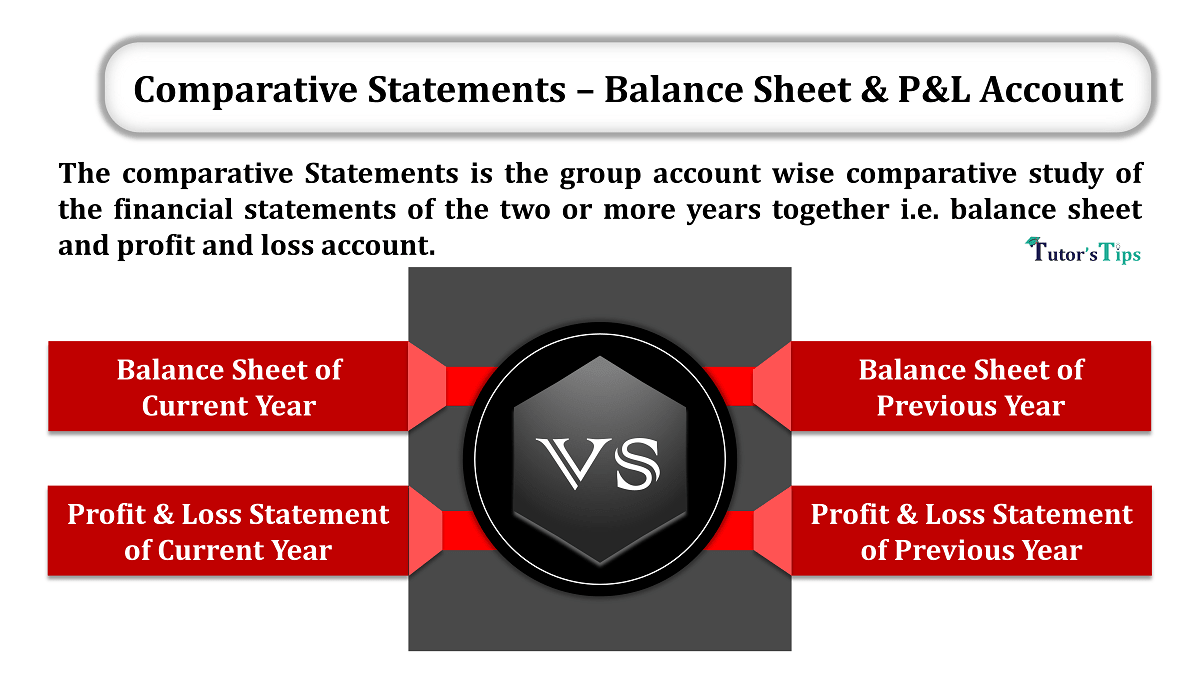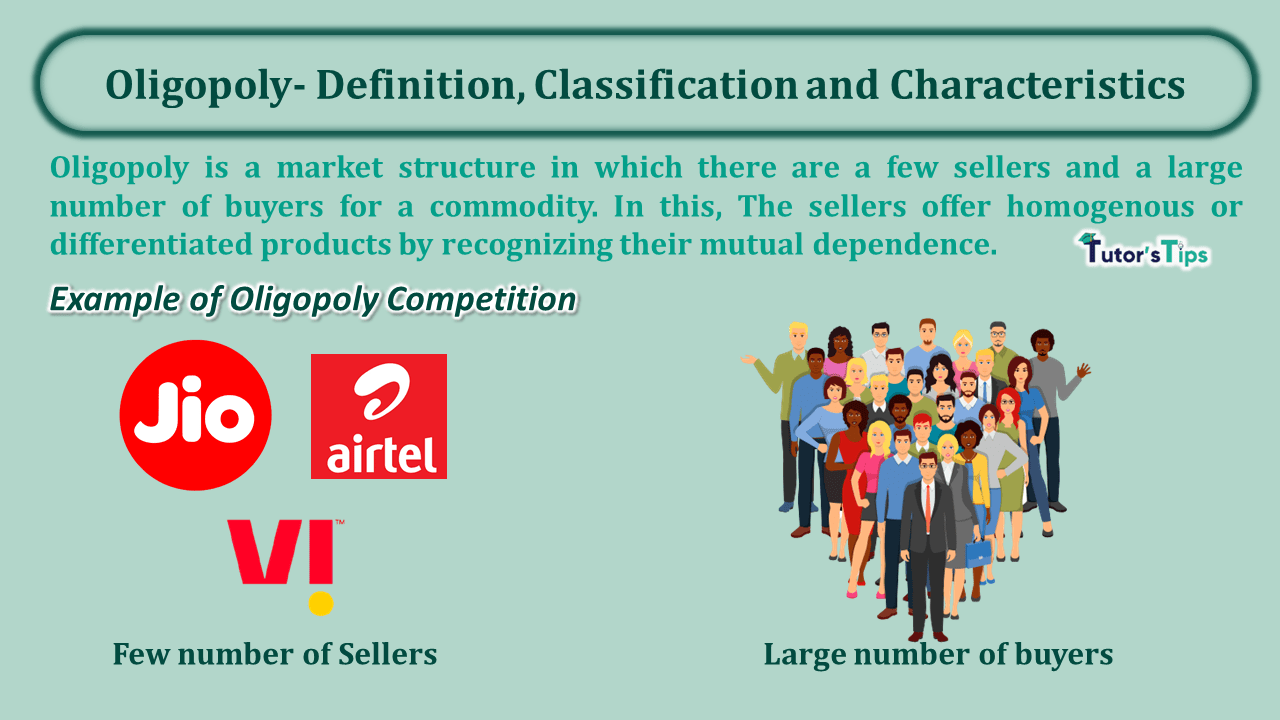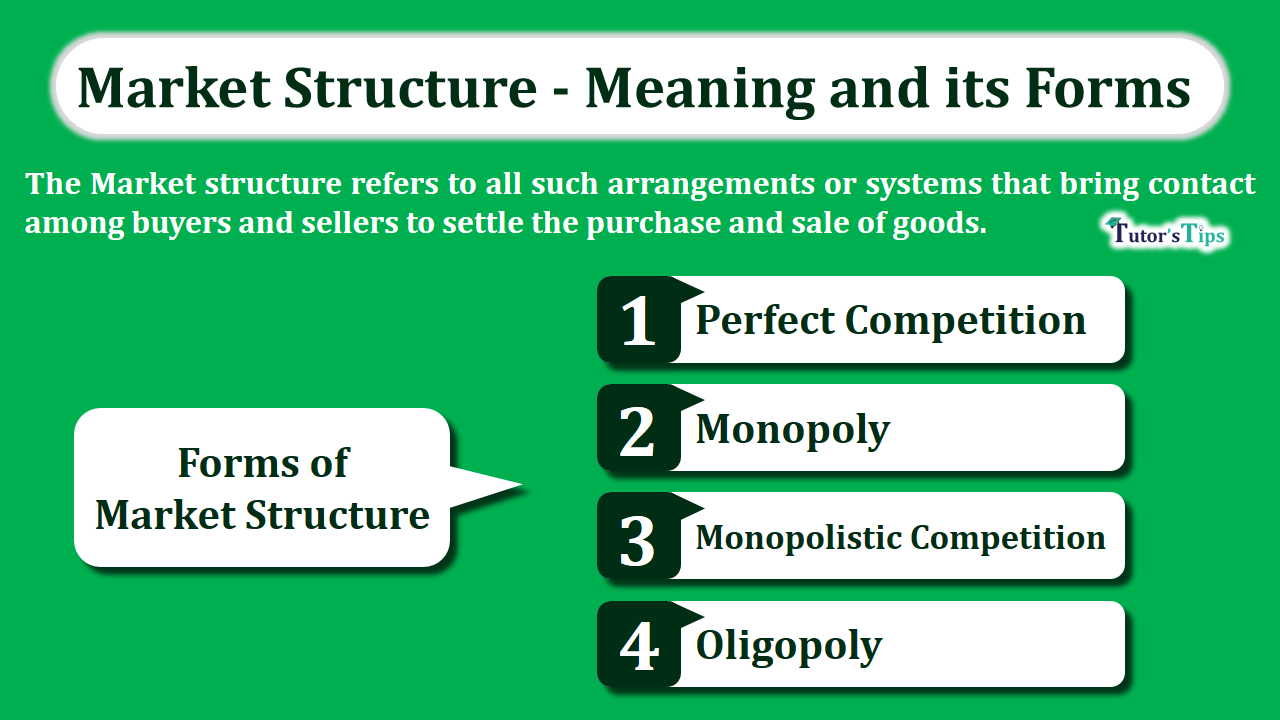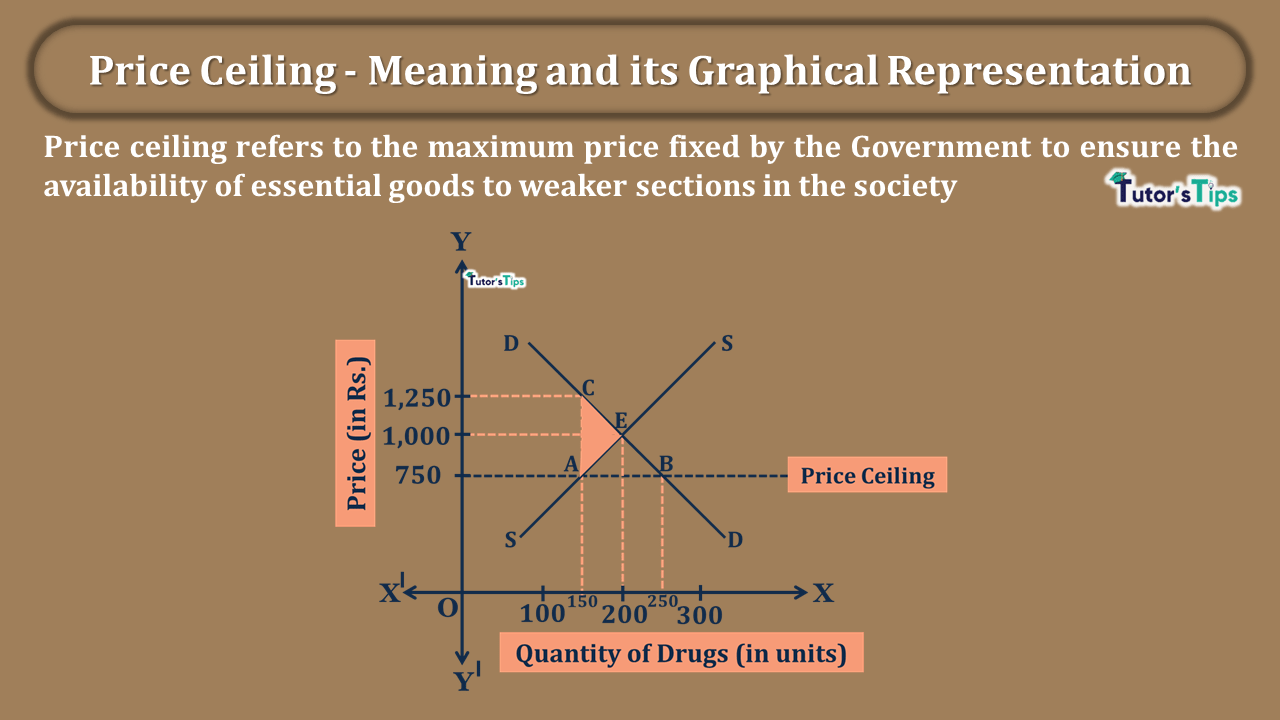Advertisement
Oligopoly is a market structure in which there are a few sellers and a large number of buyers for a commodity. In this, The sellers offer homogenous or differentiated products by recognizing their mutual dependence.
Advertisement
What is Oligopoly?
It refers to a form of the market with a few sellers selling homogenous or differentiated products. In this, there is a great deal of interdependence among them. Each oligopolist formulates the price policies by considering that of rivals. Thus, the price and output decisions of one firm influence the sales and profits of competitors. Due to the interdependence of oligopolists, the optimal decisions of one firm depends on what other firms decide to do and in which there is the opportunity of both “conflict” and “cooperation”. As there is a high degree of interdependence, it results in cut-throat competition in the market.
For Example, In India, there are several examples of Oligipoly like Airlines including Air India, Indian Airlines, Jet Airways, Sahara Airways and Automobile producers including Maruti, Hindustan, Tata, Mahendra and Mahendra, and Cielo. There is a great deal of interdependence of these firms in a particular industry.
Definitions:
In the words of P.C.Dooley,
“An oligopoly is a market of only a few sellers, offering either homogenous or differentiated products. There are so few sellers that recognize their mutual dependence.”
According to Mansfield,
Advertisement-X
“Oligopoly is a market structure characterized by a small number of firms and a great deal of interdependence.
In the words of Grinols,
” An oligopoly is a market situation in which each of a small number of interdependent, competing producers influences but doesn’t control the market.
According to McConnel,
” Oligopoly is a market situation in which a number of firms in an industry, is so, small that each must consider the reactions of rivals in formulating its price policy.”
Classification of Oligopoly:
The oligopoly can be classified as:
Advertisement-X
On the basis of Products:
On the basis of the nature of products to be produced by producers, it can be classified as:
Perfect and Imperfect Oligopoly:
A perfect Oligopoly is that situation in which all firms in an industry produce homogenous products. It is also known as Pure Oligopoly.
On the other hand, an Imperfect Oligopoly is a market situation in which all firms produce differentiated products but close substitutes. Therefore, it is also known as a Differentiated Oligopoly.
On the basis of Entry of firms:
This market can be classified on the basis of entry of firms, as:
Open and Closed Oligopoly:
Open oligopoly is a market situation in which there is no barrier to the entry of the firm in the industry. The entry of the firm is free.
But, in a Closed Oligopoly, there is a barrier to the entry of the firms in the industry. These barriers can be technological, legal, or any other type.
Advertisement-X
On the basis of Dominance:
This market can be classified on the basis of dominance, as:
Partial or Full Oligopoly:
Partial oligopoly is that market situation in which there is a dominant firm in the industry. The dominant firm is known as the price leader. Thus, The dominant firm fixes the price and others follow that price.
In contrast, Full oligopoly is that situation in which there is no dominant firm or price leader.
On the basis of Cooperation:
This market can be classified on the basis of cooperation, as:
Collusive and Non-collusive Oligopoly:
Collusive Oligopoly is that market in which firms cooperate with each other in determining the price. Further, they follow a common price policy and do not compete with each other. In other words, it is a form of market in which there are few firms in the market and all decide to avoid competition through a formal agreement. Thus, They collude to form a cartel. In this, the Price and output of the member firms are fixed as a collective/ cooperative decision. Sometimes, A leading firm in the market is accepted by the cartel as a price leader. Members of the cartel accept the price policy as specified by the price leader. It is also known as a Cooperative oligopoly.
On the other hand, a Non-Collusive Oligopoly is a market in which the firms act independently. They compete with each other and determine independently the price of their products. In other words, it is a market in which there are few firms in the market. Each firm pursues its own price and output policy independent of the rival firms. Thus, every firm tries to increase its market share through competition. Here, competition refers to collusion as a means of profit maximization. Because, there are only a few big firms in the market, there is cut-throat competition. Therefore, in this market, aggressive advertisement develops through brand loyalty. Also, it can be known as a Non-collusive oligopoly.
Characteristics :
Some of the characteristics of this market are:
A small number of big firms:
This market constitutes a small number of big firms. Thus, a firm enjoys partial control over price through brand loyalty. In this, Heavy advertisement creates brand loyalty. However, full control over price is not possible as there are competitors in the market. For Example, companies such as Maruti, Hyundai, Cielo, and Tata produce 90% of small cars in India.
Advertisement-X
A high degree of interdependence:
It is the main feature of this market. Here, Interdependence means that the firms are affected by other firms’ decisions. In this market, a small number of firms compete with each other. And, the sales of one firm depends on the firm’s price and the price charged by other firms. If one firm lowers the price, its sales will increase due to a rise in demand by consumers. Consequently, the sales of other firms’ will decrease. In such a situation, other firms also lower their prices. Accordingly, the profits of the first firm will decline. So, before taking any decision, firms have to consider the reactions of its rivals on the profits.
Therefore, the cross elasticity of demand is very high because it includes close substitutes. In short, the oligopoly firm has to consider the reactions of its rivals while determining its policies.
Difficult to determine the demand curve:
It is not possible to determine the demand curve in this market. This is because of a high degree of interdependence among the competing firms. Thus, when a firm lowers the price, the rivals also reduce the same immediately. The effect of this is difficult to trace. In other words, there is no specific response of demand to change in price. Consequently, it becomes difficult to draw any specific demand curve for this market.
Formation of Cartels in Oligopoly:
With a view to avoiding competition, the firms often make cartels. Here, a cartel means a formal agreement among the firms to avoid competition. It is a sort of collusion of competing firms but against the competition. Thus, under it, a group of different firms fixes the output and price.
Entry Barriers for new firms in Oligopoly:
Under this market, there are entry barriers for new firms. Generally, these are created through patent rights. Because of it, the existing firms don’t have to worry about the new firms in the market.
Non-Price Competition:
Under this market, the firms tend to avoid price competition. Instead, they focus on non-price competition. To compete, firms use other methods such as offers with products to attract consumers. For example, Coke and Pepsi sell their product at the same price. But, both use aggressive non-price competition by sponsoring different games and sports.
Thanks Please share with your friends
Advertisement-X
Comment if you have any questions.
References:
Introductory Microeconomics – Class 11 – CBSE (2020-21)
Advertisement











1 Comment